How to make indoor plant leaves shiny – 5 natural methods to try
Find out how to make indoor plant leaves shiny with our tips and you won't be needing leaf-shine products again


Once you discover how to make indoor plant leaves shiny the natural way, you will be doing your plants a huge favor. It's never a good idea to use chemical-laden cleaning or shine products on houseplants, especially when there are so many natural alternatives to choose from that work really well.
When it comes to keeping your indoor plants healthy and shiny, one of the best things you can do is clean their leaves. Dust, dirt, and other debris can block sunlight and prevent the plant from getting the light it needs, which is crucial to leaves looking their best. So make sure your plant leaves stay dust free with some regular TLC.
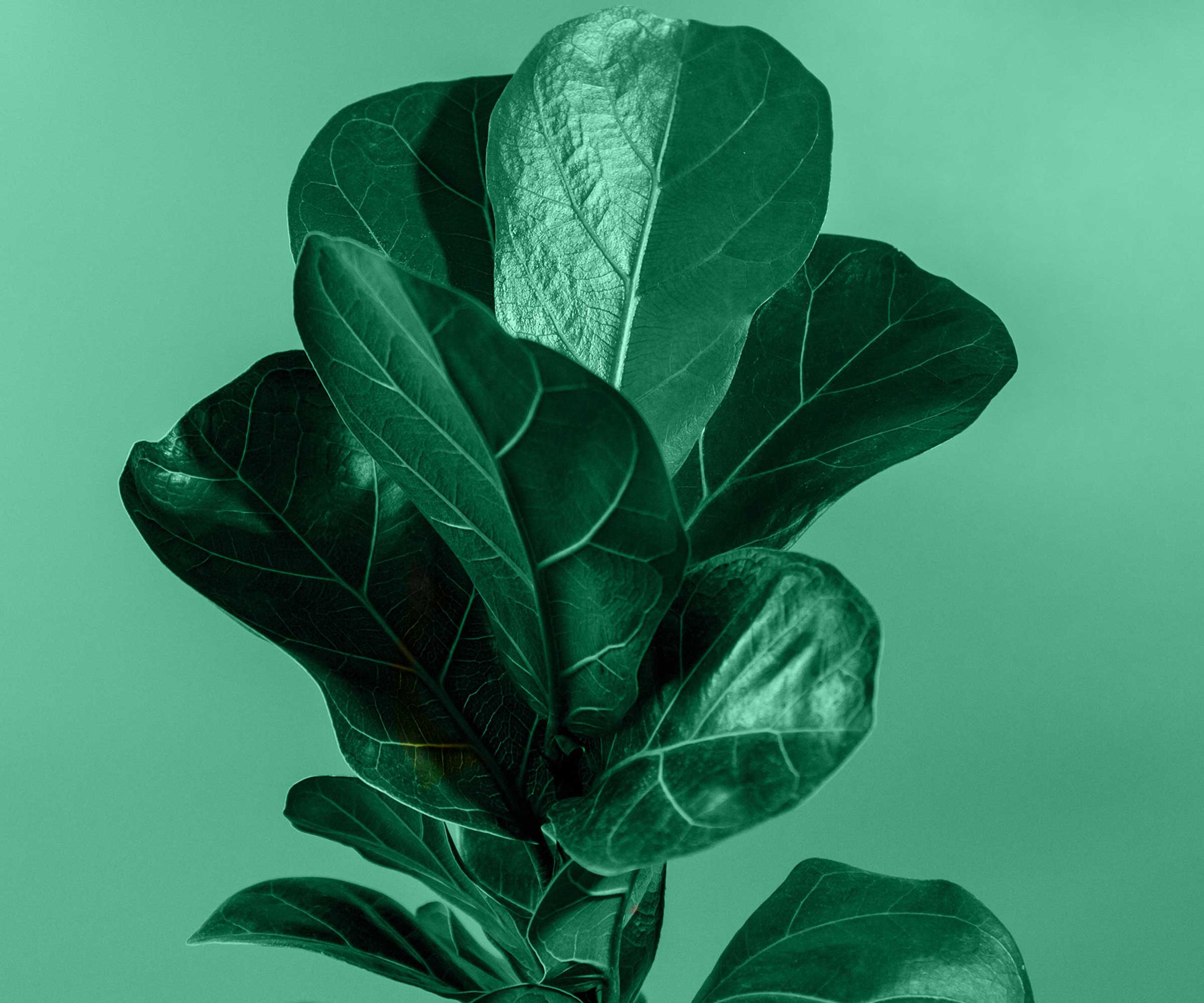
You don't need off-the-shelf products to get a shine
5 easy ways to make indoor plant leaves shiny
Use these natural shine solutions to add luster to your houseplant leaves.
1. Dust indoor plants regularly
'You can use several techniques to make your indoor plant's leaves shiny,' says plant expert Diana Cox from TheGardeningTalk.com. 'The simplest one is to clean the leaves with a soft, damp cloth. You can try using soapy water too, if necessary.' Make sure the soap is chemical-free and you rinse it off completely.
Wet your cloth and wring out any excess water so it's damp but not dripping. Gently wipe each leaf from the base upwards, being careful to support it in your other hand to minimize damage. Then repeat on the underside of the leaf, which is where houseplant pests tend to lurk – that way you'll zap them, too.
Occasionally, you may find that despite all your efforts your plant leaves still aren't shiny. 'In that case, try dabbing rubbing alcohol on stubborn dirt,' suggests Zeeshan Haider, CEO and founder of GreenryEnthusiast.com. Make a spray solution of a 1:8 ratio of rubbing alcohol and water. First, patch test on a small leaf. Once it passes the test, you can spray the plant, leave it on for 15-20 minutes, then rinse with water.
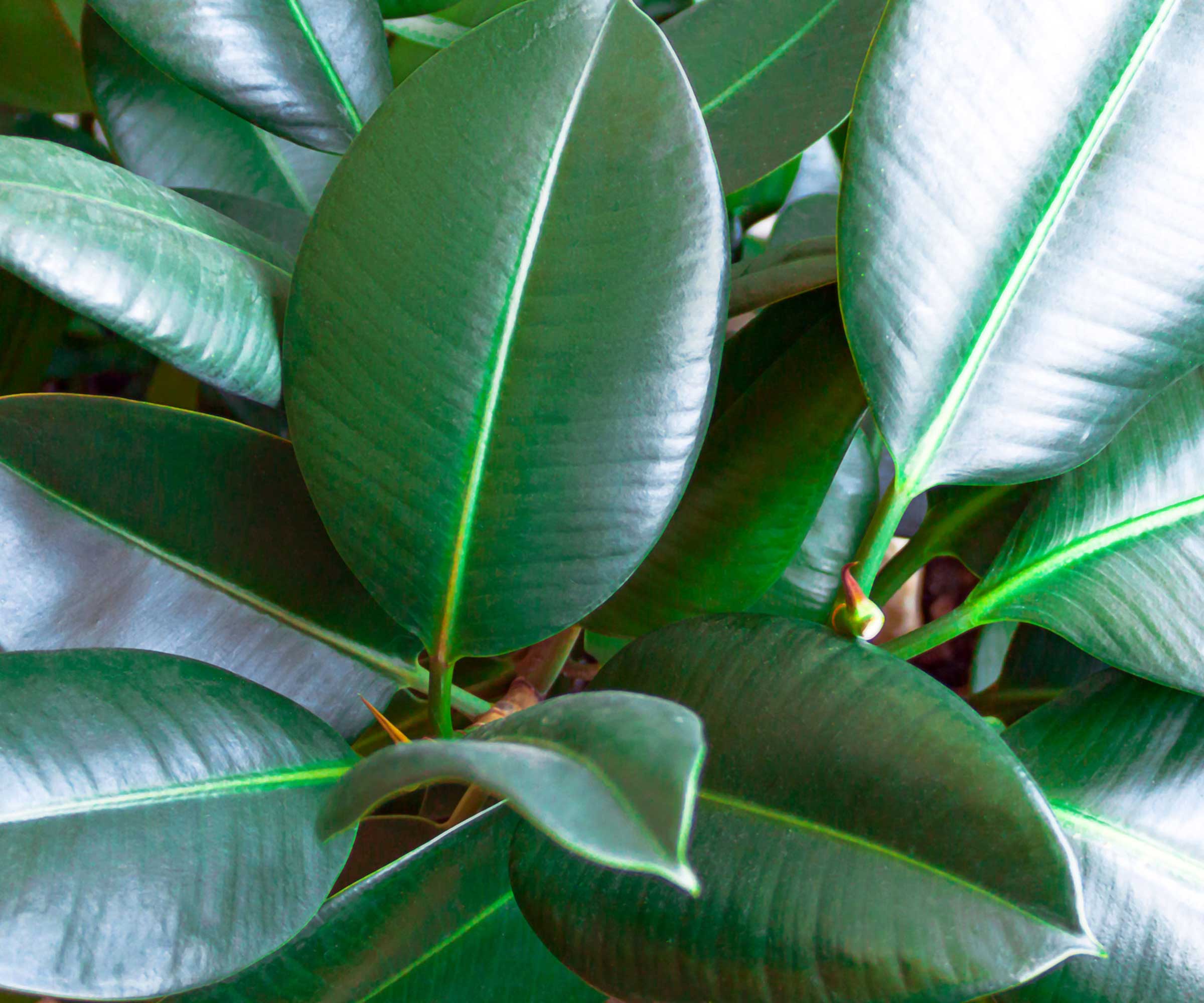
Rubber plant leaves get super shiny with the right care
2. Wipe the leaves with banana skins
This is a really easy trick for making indoor plant leaves shiny naturally. Save banana peels once you've eaten the fruit, then rub the base of the leaves with the softer inside of the peel. Once the banana peel is coated with dust and dirt, discard it and grab another. The natural oils in the peel will give the leaves a lovely silky sheen.
Design expertise in your inbox – from inspiring decorating ideas and beautiful celebrity homes to practical gardening advice and shopping round-ups.
Do this once a week or whenever the plants in your indoor garden are looking drab.
Although it looks a little messy, banana peels can be placed directly onto pot plant soil, too, as a banana fertilizer. As they decompose, they will release nutrients into the soil to feed plants.
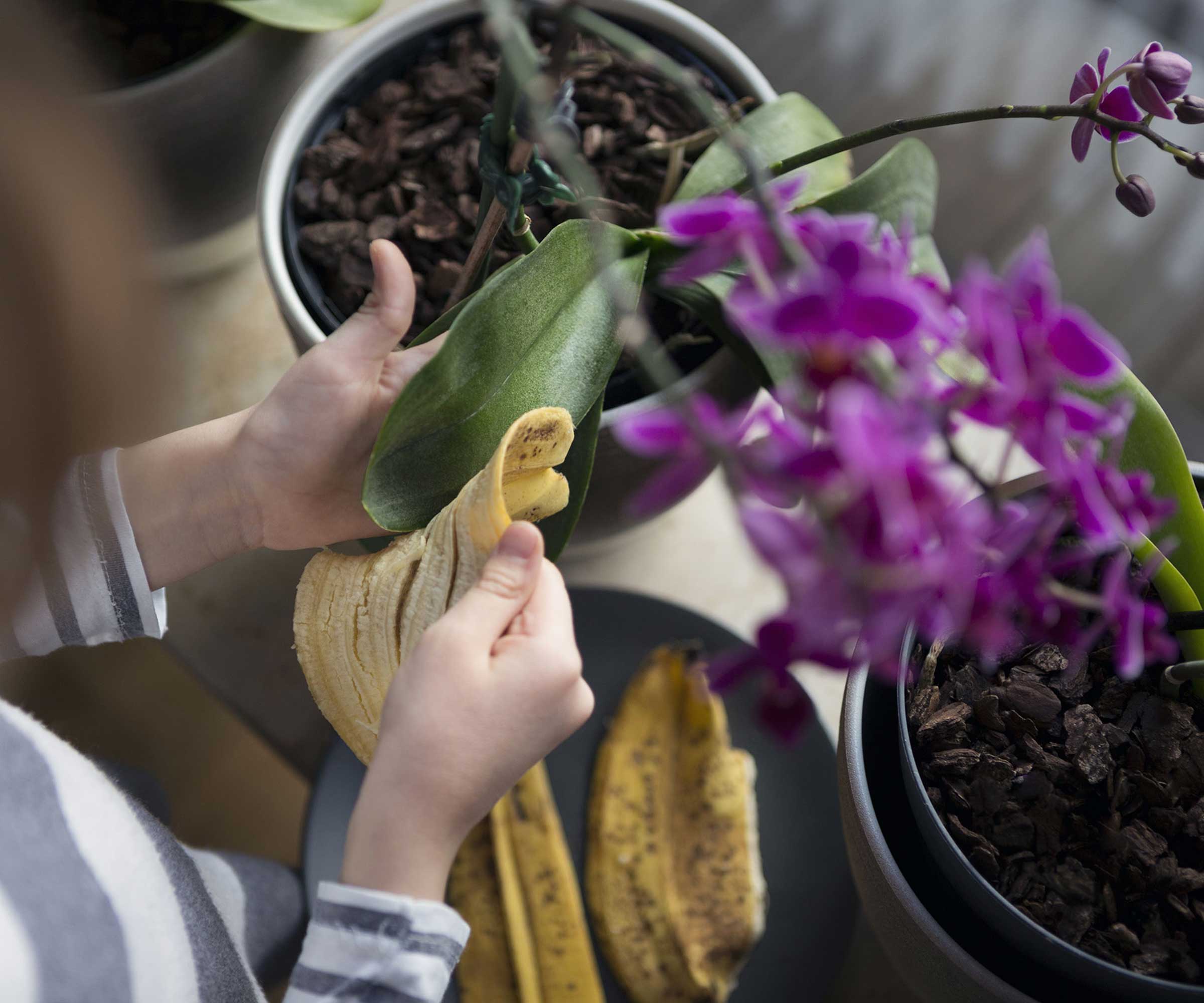
Plant leaves shine up nicely after being gently rubbed with a banana skin
3. Use a natural oil to add shine
You can use any oil to add some shine to your indoor plant leaves. Olive oil and vegetable oil are popular, but overall, coconut oil tends to be the favorite. 'If you're looking for exceptionally shiny leaves, you can use a natural oil such as coconut oil to add a little extra sparkle,' says Freddie Blackett of Patch Plants.
Meanwhile, Suzie Woolley of Serenata Flowers suggests using natural oils such as citrus oils, lavender, rosemary and eucalyptus.
To use these oils, simply add your chosen oil to a spray bottle, dilute if preferred, and use it to mist a soft cloth. Then lightly buff the leaves until they're shiny.
Another expert suggestion for shiny houseplant leaves is to use a neem oil solution. 'This can be made by mixing one teaspoon of neem oil concentrate along with dishwashing liquid and one quart of water,' says Kieron of Indoor Plant Addicts. You can buy neem oil for plants at Amazon if you want to give this method a go.
A word of caution, though: be sure not to use too much oil, as this can cause the leaves to become greasy and lead to fungal growth in the plant. It is also essential to test the solution on a small area of the plant before applying it to the entire plant to ensure that it does not cause any damage.
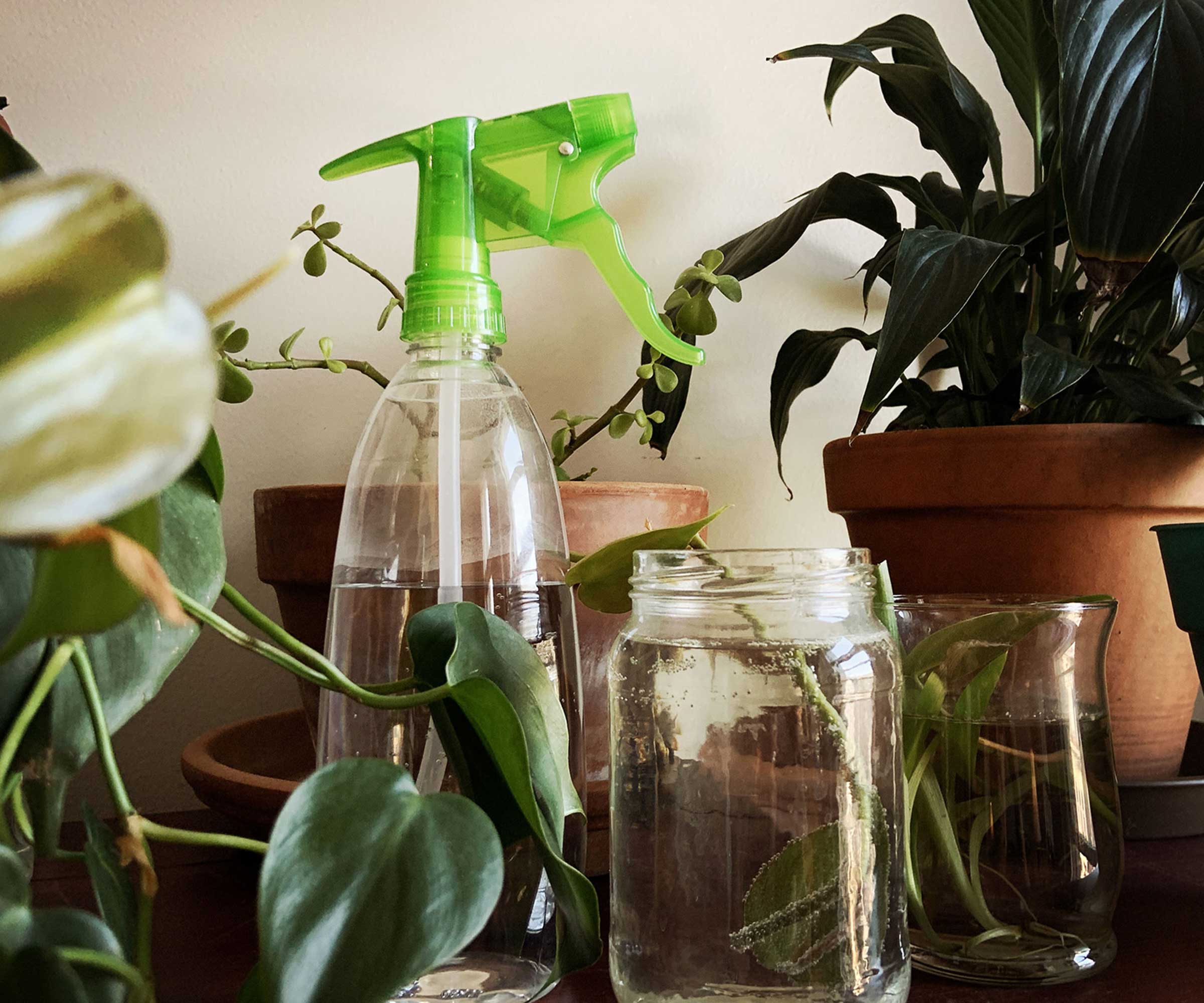
Decant oil into a spray bottle before using it to mist leaves
4. Wipe leaves with a vinegar or lemon juice solution
Another popular hack for making indoor plant leaves shiny is to clean the leaves using a mixture of water and either vinegar or lemon juice. 'Simply mix together water and vinegar (or lemon juice) in a spray bottle, then spray the mixture onto the leaves of the plant,' says Alex Tinsman from HowToHouseplant.com. 'Let the mixture sit on the leaves for a few minutes, then wipe off with a clean cloth. This will leave the leaves of your plants super shiny and appealing.'
Mixing vinegar with water is also effective at eliminating residue build-up on leaves. However, be careful not to overdo it – only put a tiny amount of vinegar in your water.
There is an added bonus too. 'The scent of vinegar is excellent at repelling pests,' says TriBeCa-based Eliza Blank, founder of The Sill.
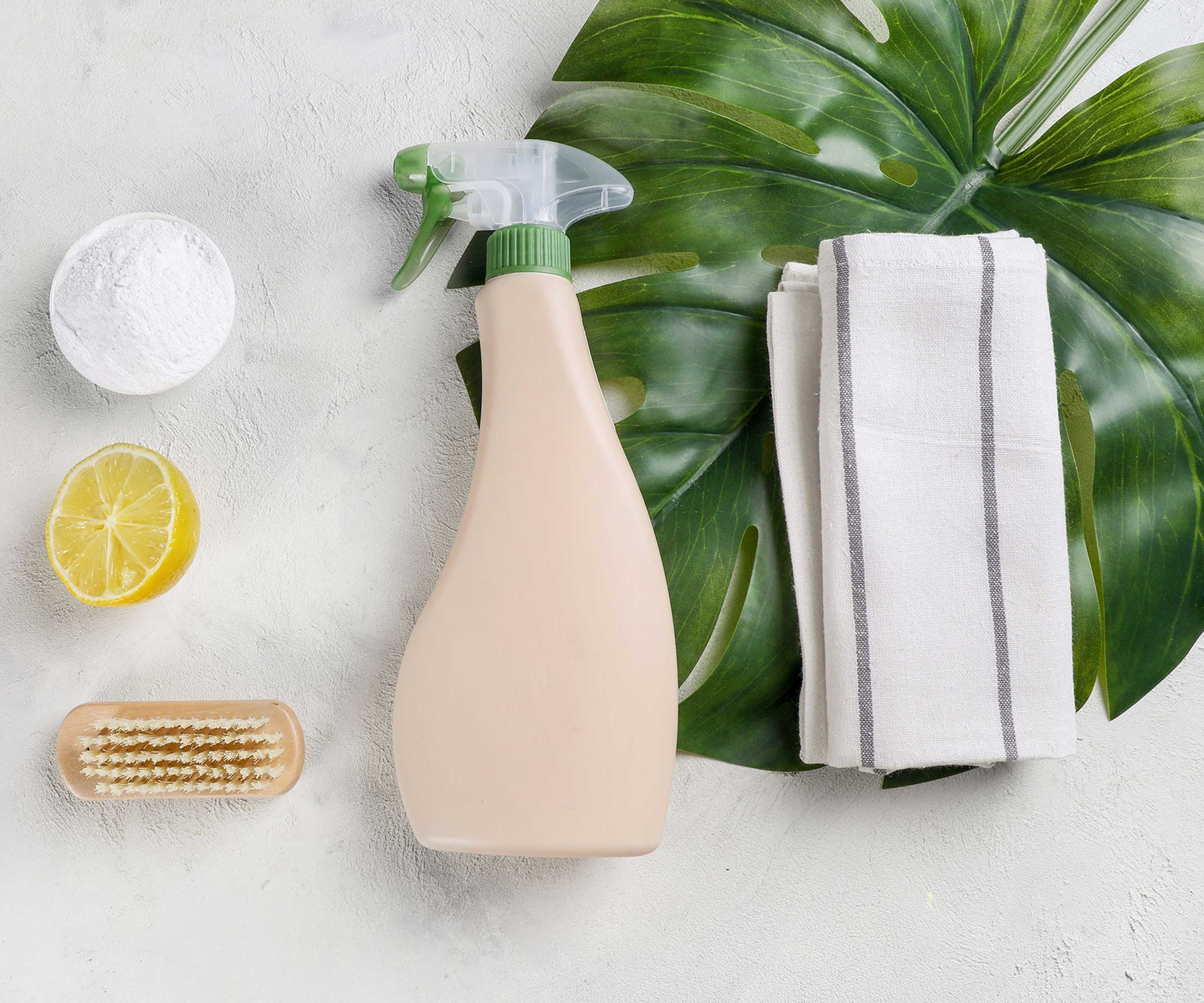
Lemon juice diluted with water in a spray bottle is excellent for tackling the build-up of mineral deposits from tap water
5. Shine up leaves with a milk and water mix
Using a combo of half milk and half water mixed up in a spray bottle is another way to make houseplant leaves look extra shiny. The proteins in milk help break down residue on leaves to give them that shine we're all looking for. Watering it down means it doesn't leave an odor on the leaves, which may attract bugs.
Spritz the leaves then simply wipe them with a soft dry sponge for a high gloss sheen. You can also apply the mix with cotton wool balls. Add the solution to a bowl and dip in a cotton wool ball. Be sure to squeeze out the cotton wool ball first so the solution doesn't drip everywhere.

A milk and water mix is one of the most popular ways to add luster to houseplant leaves
Are leaf-shine products a good idea?
You may be tempted to invest in a leaf-shining product when decorating with plants around your home. But it's a mistake, even though it might seem like the easiest route to glossy leaves. There are lots of commercial plant-shine products on the market that are easy to pop in your trolley at the garden center or store, but it's best to steer clear.
Chemicals such as silicone, alcohol, and petroleum distillates found in leaf-shine products can harm plants if not used properly. Silicone, for example, can cause leaves to become sticky and interfere with a plant's ability to photosynthesize properly, and alcohol can cause leaf tissue to become dry and damaged.
'Plants have tiny pores called stomata, which are crucial for many plant functions,' explains Eliza Blank. 'Many leaf-shine products clog these openings with oil or wax, limiting the essential gas exchanges stomata play a crucial part in.'
Plants breathe through their leaves, and the wrong leaf shiner could mean they can't take in the carbon dioxide they need to survive. 'Shining leaves this way can also lead to you thinking your plant is healthier than it is, so you forget to water or feed it as often as you should,' says Viki from The Stem's Plant Academy.
Healthy plants will have naturally shiny leaves, especially varieties like Swiss cheese plants, fiddle leaf figs and rubber plants, so won't need to be artificially enhanced in this way. 'The shine can encourage dust to stick to the leaves, too,' adds Viki. 'So you may end up with a clumpy, uneven look that means you have to clean and re-shine them over and over again.'
Even if the leaf-shine product claims to be clog-free, its residue can attract more dust and debris, leaving you with dull leaves and foliage that is more challenging to clean.

Lifestyle journalist Sarah Wilson writes about garden design and landscaping trends for Homes & Gardens. She has studied introductory garden and landscape design, and also has an RHS Level 2 qualification in the Principles of Plant Growth and Development. She is a regular contributor to Homes & Gardens and Livingetc. She has also written for Country Living, Country Homes & Interiors, and Modern Gardens magazines